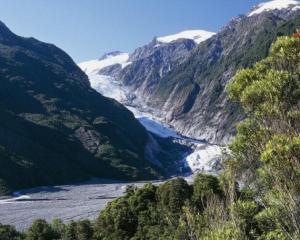
Regions editor Louise Scott reports.
"Bloody hard work".
That's how Tas Smith remembers his time working on the Haast highway.
Now 79 years old, he had just finished high school when he started working on the project.
Things were a bit different back then.
Mr Smith described how they had limited technology and equipment to build the roads and bridges.
"There was no road there at all - there was a track that we followed. We came in from the Wanaka-Makarora over the Haast Pass.
"We started at the Gates of Haast. There were a load of streams to cross; no bridges and no culverts - just fords."

It cut off access for residents and tourists. The army was brought in to get it restored swiftly.
Mr Smith, while impressed by the quick response, said the operation was in stark contrast to the conditions they faced.
He and his fellow workers lived at a basic camp for months on end.

"The camp had up to 15-20 guys at times, of all ages. We had huts there and I can remember we had a couple of cabins that were made in Raes Junction - they were carted in.
"Sometimes you were lucky and would get one to yourself."
The cook got a hut to himself and the camp also boasted a dining hall.
The men were served up roast beef, pork chops, spuds and other vegetables - along with the occasional steak.
"You would get everything you would get in a pub today - the food was good. He [the chef] would go in and out from the Haast to Dunedin each week to take in new supplies. We had to cart coal in and there was a boiler we used.
"You had to provide good food to keep the guys there."

And on weekends they went to the coast for some social activities - fishing or camping.
The engineering was also slightly different.
While they used jack hammers and bulldozers, there were no cranes or lifting equipment.
They built the bridges on dry land and pushed and pulled them across the river with a bulldozer.

"That is why I am half deaf," he said, laughing.
NZ Transport Agency senior project manager Phil Dowsett admits not much thought was put into health and safety in the early days.
He came to New Zealand in 1978 from the United Kingdom and has worked in the construction industry ever since.
"The big thing that has changed is the attitude to health and safety and there is a cost to that of course.

He said old photos highlighted the "precarious" nature of some of the work.
No health and safety issues would have been in the minds of workers back then, he said.
"It was much more of a Kiwi can-do attitude."

At the time the ODT reported Sir Keith as saying the highway was "an enduring national asset", which underlined "the unity of the whole country".
While some maintenance and upgrades had been made, the road was essentially a continuation of the work of Mr Smith and the early engineers, Mr Dowsett said.










